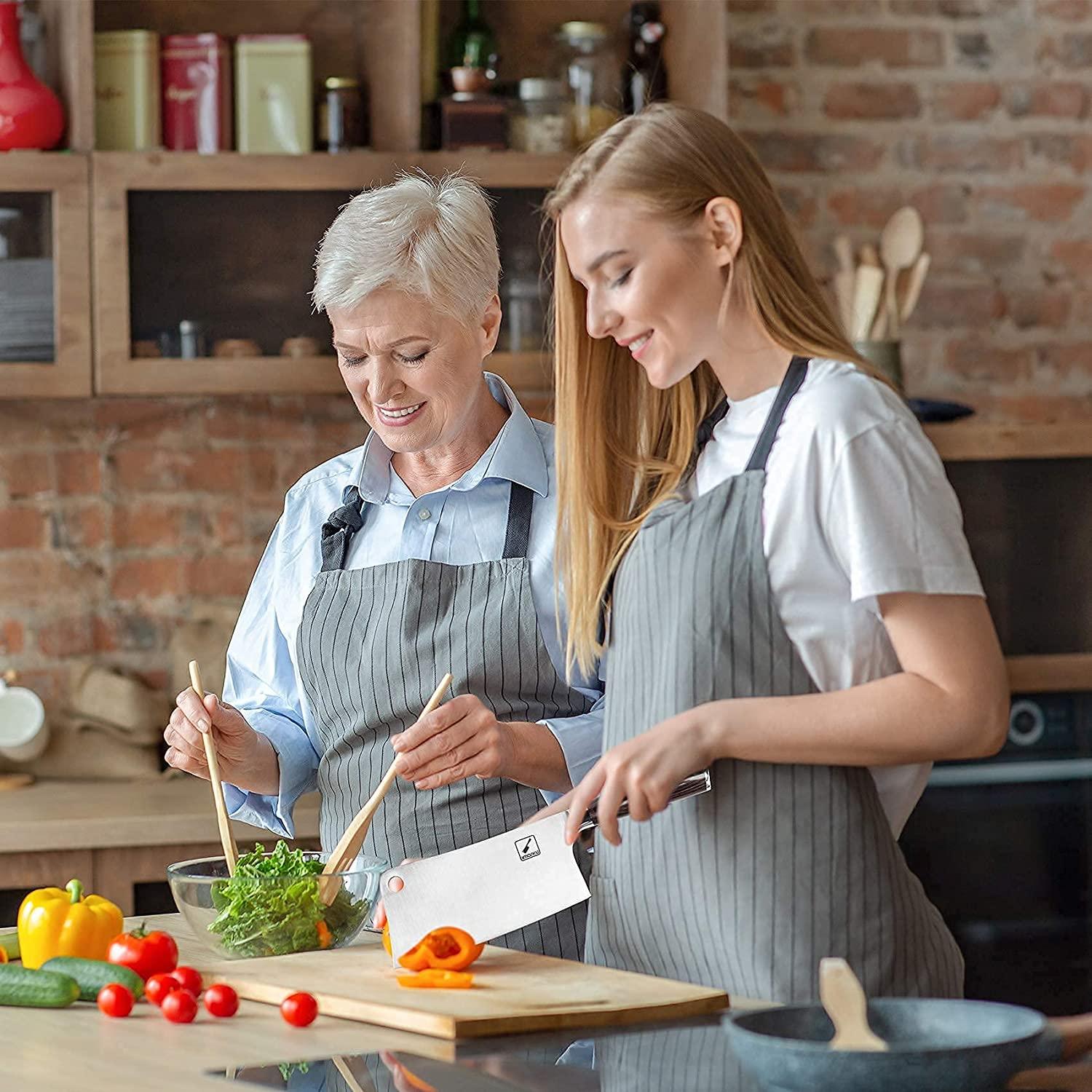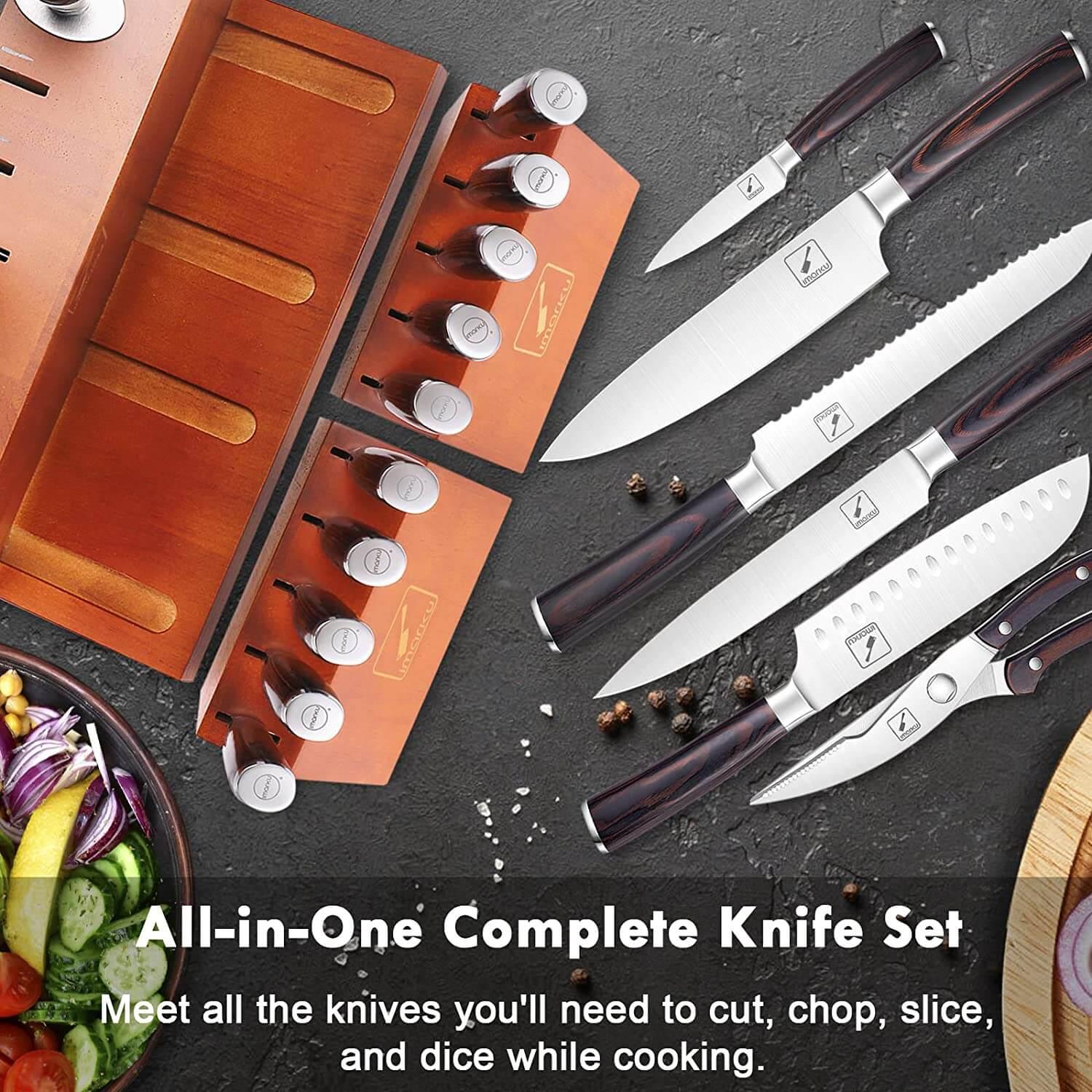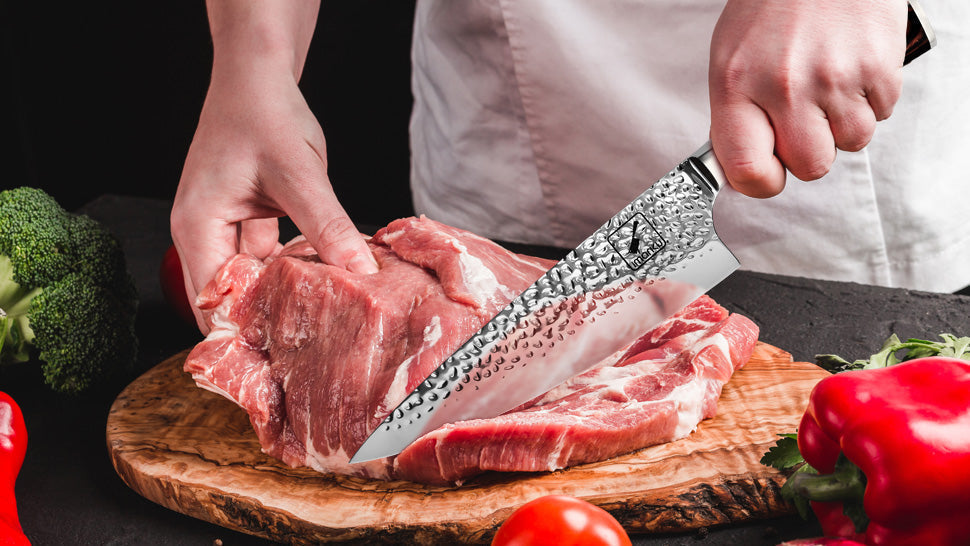TABLE OF CONTENTS
Why should you cut up your whole chicken instead of buying pre-cut ones from the grocery store? Because it's easy, saves you money, and helps you become a better cook.
In these days of quarantines and physical distancing, where many are compelled to cook more regularly at home and take fewer trips to the grocery store to avoid contamination from being around more people, it would serve you well to learn how to chop a whole chicken by yourself and become good at it.
When you buy whole chickens and cut them up yourself, you're shifting from a formulaic cooking philosophy of buying ingredients following a recipe to make the dish to a more creative cooking philosophy of buying and preparing ingredients to turn them into meals. You focus on improving and fine-tuning your cooking skills to create an almost continuous flow of food produced, creating any number of dishes from available ingredients, turning you into a better cook.
When you commit to buying whole chickens at the grocery store, you save money. They are dollars cheaper than those plastic trays of bundled chicken parts. In addition, the parts you don't use for your regular dishes can be cooked for tasty broths or stock for your other unique dishes.
Here comes the easy part. It takes only a few simple steps after you've prepared your knives and your workspace.
Choosing the Best Knife for Cutting Chicken
What is the best knife to cut chicken?
Any good cook's training begins with a good knife. It's his first and most important kitchen tool that he will frequently use for as long as he cooks. He must always keep it sharp, clean, and protected so it can perform well in his hands.
You should have the following in your first set of knives so that you can use them for chopping chicken:
The Chef's Knife.
It is designed to be a cook's primary knife. You can chop, slice, dice, and mince all types of vegetables, fruits, meats, and fish with it. When choosing a chef's knife, it is best to use one made from high-carbon stainless steel for good edge retention, sturdiness, and easy maintenance. Also, they won't rust and can be used for hard materials. The 8-inch chef's knife is the most popular size for home cooking. Since you'll be using it frequently, it should be of the highest quality.

The Bread Knife.
A bread knife isn't just for bread. It has good serration. It's your go-to knife for fruits, vegetables, and meats that have waxy or tough skins but soft interiors. That's what those serrated edges are precisely for. So, a well-serrated bread knife can also be used for cutting up rib roasts and whole cooked turkey or chicken.

The Boning Knife.
This is the best knife for cutting a whole, raw chicken. It is specially designed to be thin-bladed for gliding down the surface of bones and manipulating around joints to separate meats of all kinds, including cleaning and filleting fish, and trimming fat and silverskin (the white, silvery connective tissue attached to meats). The most popular size for home use is the 5-inch type.

Get Your Workspace Ready
After choosing your knife, get your workspace ready, ensuring sanitation and safety. You don't want knife accidents nor food poisoning. You want a clean, well sanitized, well-lit, and wide work surface, with the proper tools, so you can work easily and well.
After ensuring your workspace's cleanliness and good lighting, also make sure these are in place: correct and well-sharpened knives and kitchen shears, a sanitized surface for cutting or a cutting board, and a well-prepared chicken.
To prepare your chicken, rinse it well and remove any internal organs. Pat it dry with a clean kitchen towel or paper towel to remove the moisture. The more moisture you have, the more it will slip around. Also, lightly salt the cavity for juicier meat. You may additionally season it according to your chosen recipe.
How to Cut Up a Whole Chicken
Using your chosen knife, follow these seven easy steps to chop your whole chicken:
1. Place it on the cutting board or surface with the cavity facing you, breast side up.
2. Start with cutting off the legs. Spread the leg out and feel for the joint at the base of the leg. Slice through the skin just below the breast. Pull the leg away and pop the bone out. Cut just behind that bone right through the joint, and it should separate easily. When you're cutting it, and your knife has a lot of resistance, you're probably hitting a bone. So, move your knife around slightly until it goes through easily. Repeat with the other leg, keeping much of the meat on as much as possible.
3. Keeping the breast side up, remove the wings. Use your fingers to feel for the joint at the base of the wings, then cut right through that. Repeat with the other wing. Pull up on the wing as you're cutting. This gives you more control.
4. To remove the breast, place the chicken on its side. There's a fat line (white stripe running through the meat) running down from top to bottom on each side. The fat lines are really a road map for cutting the chicken. Use kitchen shears to cut through that by snipping right through the rib cage, separating the backbone from the breast bone.
5. To debone the breast, slice right down the centre through the skin. Locate the breast bone in the centre, then cut the breast away from the bone. To get a clean-cut, don't see back and forth but use long strokes and cut all the way down, which should completely debone the breast.
6. Thighs are trickier as they're connected to the backbone. To remove the thighs, pull one thigh up until you hear a snap. Once you hear a snap, cut right between the bones to cut the thigh out. Do the same with the other thigh.
7. To debone the thigh, locate the bone, then cut the meat away from it on both sides. Firmly grip one end of the bone and cut the bone away from the meat with long, careful strokes.
Bravo! You have now cut your first whole chicken, and you should have at least 8 chicken parts. To get 10 parts, you can cut each breast into 2 pieces, also using the back of the knife for more leverage.
You can now use all the different pieces for different types of recipes. You can chop up the breast, barbecue them up, or use them for salads. You can braise the thighs and the wings for curries and different dishes with sauces. You can use the backbone for soups, broths, and sauces. So, the whole chicken you've just chopped has a variety of purposes.
This saves you money even as you develop the skills for cutting meat, since most land-based animals basically have similar parts. As you get better at cutting whole chicken in preparing your meals, you become a better cook.






















Leave a comment
All comments are moderated before being published.
This site is protected by hCaptcha and the hCaptcha Privacy Policy and Terms of Service apply.